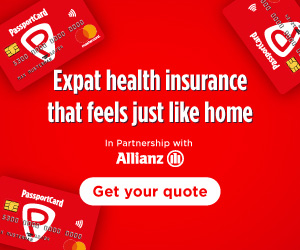Driving in Gimpo
Summary: Driving in a new country can be daunting. These tips offer insight into what to expect when driving in Gimpo.
1. Understanding the Driving Culture
Driving in Gimpo, like many parts of Korea, can be a bit challenging for foreigners. Korean drivers are known for their aggressive driving style, and traffic rules are not always strictly adhered to. It's important to be alert and cautious at all times. Also, road signs are mostly in Korean, so it's beneficial to learn some basic Korean road signs and terms.
2. Choosing the Right Car
Compact cars are recommended for driving in Gimpo due to the narrow roads and heavy traffic. Smaller cars are easier to maneuver and park. However, if you have a family or need more space, consider a mid-size car. Most cars in Korea are automatic, so if you're used to driving manual, it might take some time to adjust.
3. Parking in Gimpo
Finding parking in Gimpo can be difficult, especially in crowded areas. Most parking lots are paid, and the cost can add up quickly. It's advisable to use public transportation when possible or find accommodation with a parking space included. Some shopping malls offer free parking for customers.
4. Driving with an International License
Foreigners can drive in Korea with an International Driving Permit (IDP) for up to one year. After that, you will need to obtain a Korean driver's license. Make sure your IDP is issued by a country that Korea recognizes. Also, remember to carry your passport and home country's driver's license along with your IDP.
5. Obtaining a Korean Driver's License
To get a Korean driver's license, you need to pass a written test, a practical driving test, and a physical examination. The written test is available in multiple languages, including English. You can also convert your home country's driver's license to a Korean one if your country has a mutual recognition agreement with Korea. This process usually involves submitting necessary documents, a simple physical check-up, and sometimes a written test.
6. Using Navigation Apps
Navigation apps are very helpful when driving in Gimpo. They provide real-time traffic updates and the fastest routes. Google Maps works in Korea, but it doesn't provide navigation for driving. Instead, consider using local apps like Naver Map or KakaoMap, which are available in English and more accurate.
7. Understanding the Toll System
Many highways in Korea have tolls. You can pay with cash or a Hi-pass, a prepaid toll card. Some rental cars come with a Hi-pass, so check with your rental company. If you plan to drive frequently on highways, getting a Hi-pass can save you time as you don't need to stop at the toll booth.
About the Author
 Betsy Burlingame is the Founder and President of Expat Exchange and is one of the Founders of Digital Nomad Exchange. She launched Expat Exchange in 1997 as her Master's thesis project at NYU. Prior to Expat Exchange, Betsy worked at AT&T in International
and Mass Market Marketing. She graduated from Ohio Wesleyan University
with a BA in International Business and German.
Betsy Burlingame is the Founder and President of Expat Exchange and is one of the Founders of Digital Nomad Exchange. She launched Expat Exchange in 1997 as her Master's thesis project at NYU. Prior to Expat Exchange, Betsy worked at AT&T in International
and Mass Market Marketing. She graduated from Ohio Wesleyan University
with a BA in International Business and German.
Some of Betsy's articles include 12 Best Places to Live in Portugal, 7 Best Places to Live in Panama and 12 Things to Know Before Moving to the Dominican Republic. Betsy loves to travel and spend time with her family. Connect with Betsy on LinkedIn.





